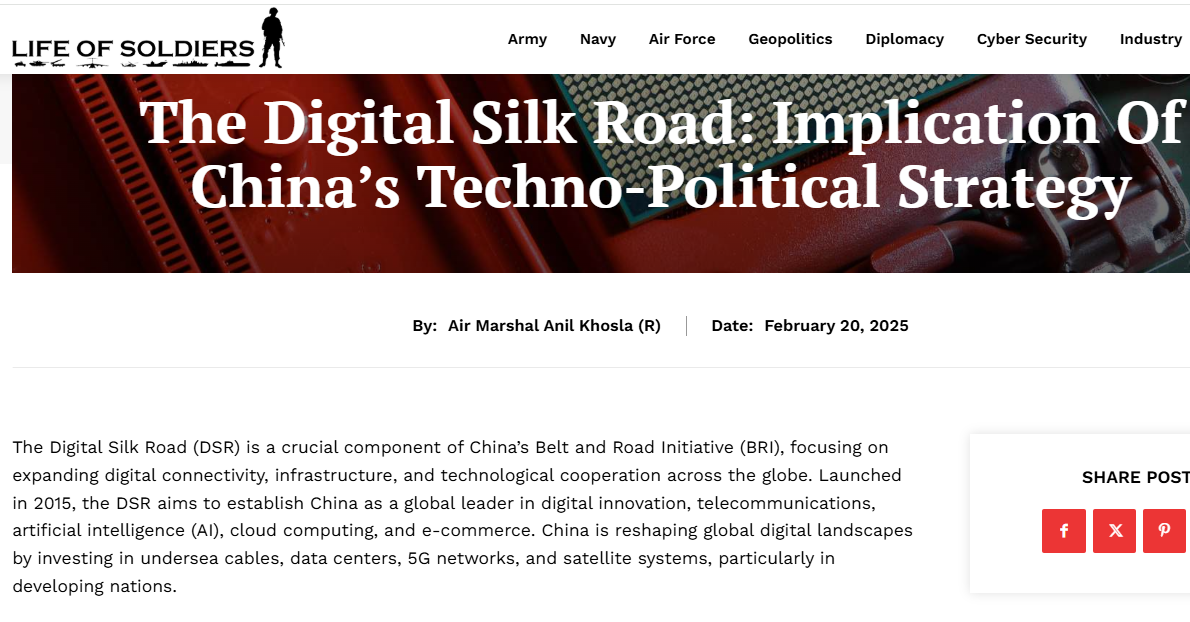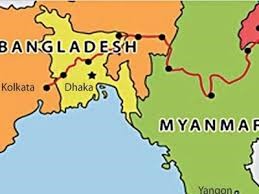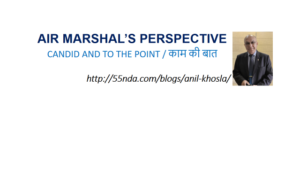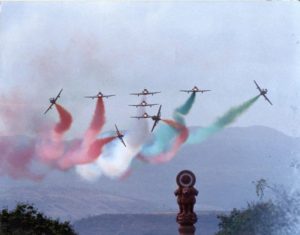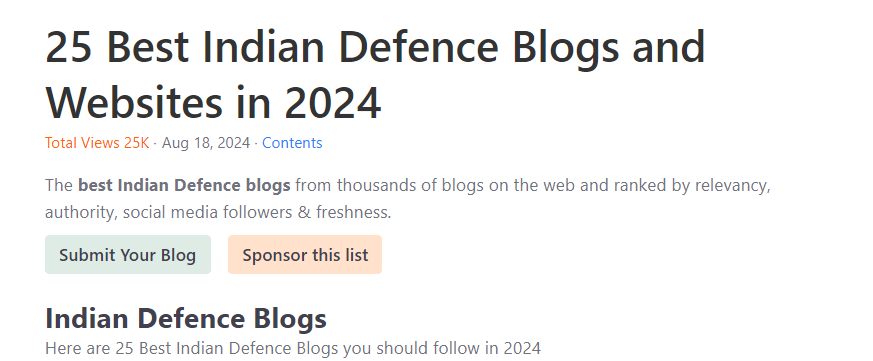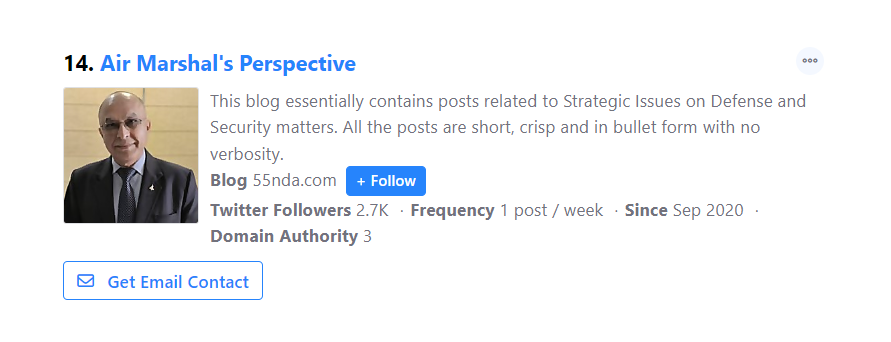My article was published on the Life of Soldier website on 20 Feb 25 and in the Mar 25 issue of the e-magazine.
The Digital Silk Road (DSR) is a crucial component of China’s Belt and Road Initiative (BRI), focusing on expanding digital connectivity, infrastructure, and technological cooperation across the globe. Launched in 2015, the DSR aims to establish China as a global leader in digital innovation, telecommunications, artificial intelligence (AI), cloud computing, and e-commerce. China is reshaping global digital landscapes by investing in undersea cables, data centers, 5G networks, and satellite systems, particularly in developing nations.
While the DSR offers economic opportunities, it raises significant concerns about cyber security, digital sovereignty, geopolitical leverage, and the global balance of power. This article explores the implications of China’s techno-political strategy through the Digital Silk Road, highlighting its impact on international relations, digital governance, and technological standards.
Objectives and Scope of China’s Digital Silk Road
China’s Digital Silk Road (DSR) is an extension of the Belt and Road Initiative (BRI) to build a global digital infrastructure and strengthen China’s role as a technological and cyber power. The DSR focuses on expanding global digital infrastructure, enhancing technological dominance, promoting a state-centric internet governance model, fostering economic and financial integration, and leveraging cyber security for geopolitical influence. These objectives position China as a leader in the digital economy while shaping the global technology landscape.
Expanding Global Digital Infrastructure. One of the primary objectives of the DSR is to build and broaden digital infrastructure across Asia, Africa, Latin America, and parts of Europe. China invests heavily in 5G networks, fibre-optic cables, satellite communication, cloud computing, and data centers in partner countries. Companies like Huawei, ZTE, and China Mobile are key in setting up next-generation telecommunications networks. By providing affordable digital solutions, China enhances digital connectivity in developing economies while ensuring long-term dependence on its technology.
Enhancing Technological Dominance. China’s DSR is a strategic initiative to establish global leadership in emerging technologies such as artificial intelligence (AI), quantum computing, blockchain, and smart cities. Through investments in research and development, China aims to surpass Western competitors in critical technological domains. The DSR facilitates technology transfer to BRI nations, strengthening China’s influence in digital economies worldwide. By setting standards for 5G, digital currencies, and AI governance, China aspires to shape the future technological order in its favour.
Promoting a State-Centric Internet Governance Model. A significant aspect of the DSR is to promote China’s vision of cyber sovereignty, where individual nations exert greater control over their internet spaces. Unlike the Western model of an open and decentralised internet, China’s approach advocates for government-regulated digital spaces. By exporting its Great Firewall-inspired surveillance technology, China helps partner countries implement censorship, content control, and cyber monitoring. This model appeals to authoritarian and semi-authoritarian regimes seeking to maintain strict control over digital platforms.
Economic and Financial Integration. The DSR aligns with China’s broader goal of deepening economic integration with partner countries. This initiative’s key components are digital payment systems, e-commerce platforms, and fintech solutions. Platforms like WeChat Pay and Alipay are expanding their global reach, offering alternative financial ecosystems independent of Western-controlled networks like Visa and Mastercard. Additionally, China is promoting the digital yuan (e-CNY) as a potential global currency, challenging the dominance of the US dollar in international trade and finance.
Cyber security and Geopolitical Leverage. China’s control over global digital infrastructure provides it with significant cyber security and geopolitical leverage. Deploying 5G networks and undersea cables raises concerns about potential espionage and data security risks. Many Western nations have raised alarms about the influence China could exert through its digital infrastructure, particularly in strategic sectors. By establishing cyber security partnerships with DSR nations, China strengthens its digital defence capabilities while expanding its cyber footprint globally.
Geopolitical Dimensions.
Strengthening China’s Global Influence. The DSR allows China to position itself as a leader in digital infrastructure and emerging technologies. China cultivates long-term dependencies among participating nations by providing affordable, high-quality digital solutions.
Challenging Western Technological Hegemony. Western nations, led by the U.S. and the European Union, dominate global technology standards and infrastructure. The DSR challenges this dominance by offering alternative systems for 5G networks, cloud computing, and AI governance. Chinese companies like Huawei, ZTE, and Alibaba Cloud are expanding their presence, often undercutting Western competition in price and accessibility.
Digital Authoritarianism and Cyber Sovereignty. China’s model of digital governance favours state control over the Internet. Through DSR partnerships, China exports its Great Firewall approach, influencing governments to adopt stricter cyber regulations, internet censorship, and surveillance technologies. Countries with integrated Chinese digital infrastructure are more likely to follow Beijing’s lead in cyber regulations, shifting global norms toward a state-centric internet rather than a decentralised, open model.
Strategic Control over Critical Digital Infrastructure. Control over global digital infrastructure grants China significant geopolitical leverage. Fibre-optic cables, satellite navigation systems (BeiDou), and cloud computing networks enable China to influence data flows, monitor foreign governments, and potentially disrupt communication channels in conflict.
Economic and Technological Implications
Digital Yuan and Financial Influence. China’s introduction of the Digital Yuan (e-CNY) under the DSR strategy represents a direct challenge to the U.S. dollar’s dominance in international trade. By promoting digital currency adoption in Belt and Road Initiative nations, China reduces reliance on SWIFT transactions, mitigating the impact of Western financial sanctions.
E-Commerce and Digital Payments Expansion. Alibaba, Tencent, and other Chinese tech giants are expanding e-commerce and fintech ecosystems across Africa, Southeast Asia, and Latin America. This expansion integrates developing economies into China’s digital sphere, creating economic dependencies favouring Beijing’s trade policies.
AI, Big Data, and Surveillance Technologies. China’s leadership in artificial intelligence and big data analytics has implications for both governance and security. Many countries that embrace Chinese-built smart cities, AI-driven surveillance, and facial recognition systems risk becoming more aligned with China’s authoritarian digital model.
5G and Telecommunications Control. Huawei and ZTE dominate global 5G infrastructure projects, particularly in developing nations. The reliance on Chinese telecom networks raises concerns over data privacy, potential backdoor access, and espionage risks. This leads to Western pushback and bans on Huawei equipment in the U.S., UK, and Australia.
Cyber Security Threats and Espionage Concerns
China’s involvement in building and managing digital infrastructure raises fears of hidden backdoors, allowing for cyber espionage and data exfiltration. Many Chinese technology firms, such as Huawei and ZTE, have been accused of having close ties with the Chinese government, which could potentially use these networks for intelligence gathering. Nations relying on Chinese-built digital infrastructure risk compromising their communications, governmental data, and critical security operations.
Espionage and Data Harvesting. One of the DSR’s primary concerns is the large-scale data collection from participating countries. Chinese firms involved in cloud computing, smart city technologies, and undersea cables could gain access to vast amounts of sensitive information, including personal data, financial transactions, and military communications. This data could be exploited for economic advantage, intelligence gathering, or coercion, enhancing China’s strategic leverage over nations.
Cyber Attacks and Infrastructure Disruption. Nations’ dependence on Chinese-built digital infrastructure increases their vulnerability to cyber-attacks. There is a risk that in times of geopolitical tensions, Beijing could leverage access to these systems to disrupt critical services such as power grids, financial networks, and telecommunications. Concerns persist regarding Chinese-manufactured hardware containing software vulnerabilities that could be exploited for state-sponsored cyber operations.
AI and Disinformation Campaigns. China’s advancements in AI and big data analytics enable sophisticated disinformation campaigns. By influencing narratives through social media manipulation, AI-generated content, and state-backed media, China could shape public opinion and political outcomes in target countries. Such interference could destabilise democratic institutions, promote pro-China sentiment, and undermine opposition to Beijing’s global ambitions.
Digital Sovereignty and Dependency Risks. Many developing nations, enticed by China’s affordable technology and financial assistance, risk becoming overly reliant on Beijing for digital infrastructure. This dependency undermines their digital sovereignty, limiting their ability to control data, cyber security policies, and technological standards. Once deeply integrated into China’s digital ecosystem, countries may struggle to transition to alternative suppliers without significant economic and operational disruptions.
Global Responses and Countermeasures
In response to the security risks posed by China’s Digital Silk Route (DSR), many nations and alliances have implemented countermeasures to safeguard their digital infrastructure and reduce reliance on Chinese technology. The United States, European Union, and key Indo-Pacific allies have tightened regulations on Chinese firms like Huawei and ZTE, citing concerns over espionage and cyber security threats. The U.S. has led initiatives such as the Clean Network Program, restricting the use of Chinese telecommunications equipment in critical infrastructure. Similarly, the EU’s 5G Toolbox provides guidelines to mitigate high-risk vendors’ influence on European digital networks. Additionally, alternative global initiatives such as the Blue Dot Network and the Partnership for Global Infrastructure and Investment (PGII), spearheaded by the G7, aim to provide transparent and secure alternatives to Chinese digital infrastructure projects. Nations also invest in cyber security frameworks, supply chain diversification, and AI-driven disinformation countermeasures to reduce Beijing’s digital influence. While China’s DSR continues to expand, international efforts are increasingly focused on promoting secure, resilient, and independent digital ecosystems to counter the strategic risks associated with Chinese technological dominance.
India’s Strategic Response. India has adopted a multi-faceted approach to counter China’s Digital Silk Route (DSR) by enhancing cyber security, restricting Chinese tech investments, and promoting domestic digital initiatives. New Delhi has banned numerous Chinese apps over data security concerns and imposed stricter scrutiny on Chinese telecom firms like Huawei and ZTE in its 5G rollout. India is also expanding its digital partnerships with the U.S., Japan, and the EU to develop secure alternatives. Initiatives like Digital India and Made in India aim to boost indigenous tech capabilities, reducing dependence on Chinese infrastructure while strengthening national cybersecurity and data sovereignty.
Emerging Digital Alliances
In response to China’s Digital Silk Route (DSR), global powers are forming strategic digital alliances to promote secure and transparent alternatives. The Quad (U.S., India, Japan, Australia) is enhancing collaboration on 5G, AI, and cyber security. The EU-U.S. Trade and Technology Council (TTC) focuses on setting global tech standards. The Blue Dot Network and Partnership for Global Infrastructure and Investment (PGII), led by G7 nations, offer financing for secure digital infrastructure in developing countries. These alliances aim to counter China’s technological dominance by fostering worldwide resilient, open, and trustworthy digital ecosystems.
Conclusion
The Digital Silk Road is more than just an economic initiative. It is a strategic instrument of techno-political influence that enhances China’s global standing. While it offers significant opportunities for digital development, it raises concerns about cyber security, digital authoritarianism, and geopolitical dependence. As nations seek to balance economic engagement with China against strategic vulnerabilities, the future of the DSR will shape the global digital order, cyber security norms, and geopolitical alignments in the coming decades. The world is at a crossroads where the battle for digital supremacy will define 21st-century geopolitics.
Please Do Comment.
Link to the article on the website:-
The Digital Silk Road: Implication Of China’s Techno-Political Strategy
For regular updates, please register your email here:-
References and credits
To all the online sites and channels.
Pic Courtesy Internet.
References:-
- Eurasia Group. “The Geopolitical Consequences of the Digital Silk Road: China’s Emerging Technology Influence.” Strategic Studies Quarterly, vol. 15, no. 3, 2021, pp. 12–34.
- Feldstein, Steven. “The Rise of Digital Authoritarianism: China, AI, and Repressive Governance.” Foreign Affairs, vol. 99, no. 3, 2020, pp. 56–72.
- Chen, Dingding, and Wang, Xiaojun. “AI, Big Data, and China’s Quest for Global Digital Supremacy.” Asian Security, vol. 16, no. 4, 2022, pp. 431–452.
- Segal, Adam. “China’s Vision for Cyber Sovereignty and Implications for Global Internet Governance.” International Security, vol. 45, no. 2, 2021, pp. 65–91.
- Creemers, Rogier. “China’s Cyber Governance Model: Between Control and Connectivity.” Journal of Cyber Policy, vol. 3, no. 1, 2018, pp. 40–57.
- Brookings Institution. Beijing’s Digital Strategy: The Global Expansion of the Digital Silk Road. Brookings, 2022.
- Mozur, Paul. “How China is Exporting Digital Authoritarianism.” The New York Times, October 15, 2022.
- McLaughlin, Timothy. “The Digital Silk Road and the New Internet Order.” The Atlantic, March 22, 2023.
- Strumpf, Dan. “Beijing’s Big Tech Play: The Digital Silk Road and the Fight for Global Networks.” The Wall Street Journal, May 3, 2023.
- Denyer, Simon. “China’s Surveillance Tech Goes Global.” The Washington Post, August 27, 2022.
- The Economist. “China’s Digital Silk Road: Exporting the Future or a Dystopian Vision?” The Economist, September 12, 2023.
- U.S.-China Economic and Security Review Commission. China’s Digital Silk Road and Its Implications for U.S. Interests. Washington, D.C., 2023.
- Center for a New American Security (CNAS). China’s Tech Expansion and the Global Competition for Digital Supremacy. CNAS Report, 2023.
- European Parliament. The EU Response to China’s Digital Silk Road: Strategic Risks and Opportunities. Brussels, 2022.
- Council on Foreign Relations (CFR). “How China’s Digital Silk Road is Reshaping Global Technology Governance.” www.cfr.org
- Center for Strategic and International Studies (CSIS). “The Digital Silk Road: Expanding Chinese Influence in Global Tech.” www.csis.org
- Mercator Institute for China Studies (MERICS). “China’s Tech Diplomacy and the Digital Silk Road.” www.merics.org
- RAND Corporation. “The Digital Silk Road: Security and Economic Implications for the West.” www.rand.org
Disclaimer:
Information and data included in the blog are for educational & non-commercial purposes only and have been carefully adapted, excerpted, or edited from reliable and accurate sources. All copyrighted material belongs to respective owners and is provided only for wider dissemination.

